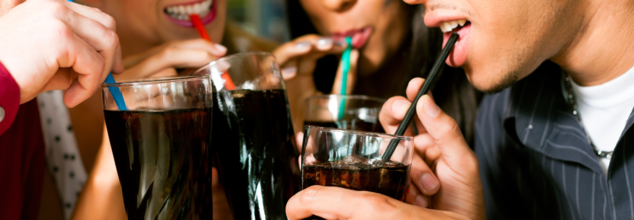- Health Conditions A-Z
- Health & Wellness
- Nutrition
- Fitness
- Health News
- Ayurveda
- Videos
- Medicine A-Z
- Parenting
- Web Stories
Recovering From A Heart Attack? Avoid These Dangerous Mistakes

A heart attack marks a life-altering moment, one that demands more than just medication and doctor visits. It calls for a complete reimagining of daily habits, especially around one of the most overlooked yet consequential risk factors: prolonged sitting.
While conventional recovery advice has long emphasized formal exercise routines, groundbreaking new research suggests that something as simple as reducing sedentary time—and replacing it with even light physical movement or additional sleep can dramatically lower the risk of another cardiac event.
A recent study published in Circulation: Cardiovascular Quality and Outcomes has illuminated a critical insight: lounging too much after a heart attack may be setting survivors up for a repeat episode—or worse.
Here's why sitting is so risky and what you can do to truly recover—not just survive—after a heart attack.
Avoid The 14-Hour Sedentary Trap
In a prospective study that followed over 600 adults, researchers tracked heart attack and chest pain patients for a year after discharge from Columbia University Medical Center. Using wearable movement-tracking devices, they found that individuals who were sedentary for more than 14 hours a day faced more than double the risk of experiencing another heart-related event—or even dying.
Patients in the most inactive group were 2.5 times more likely to suffer complications than their more mobile peers. It wasn’t just about formal workouts—total movement throughout the day, including light activity and even sleep, was associated with better outcomes.
More physical activity and more sleep are healthier than sitting, one doesn’t have to start running marathons after a cardiovascular event to see benefits.
What Happens When You Replace Sitting?
What makes this study especially impactful is the practical takeaway: you don’t need to engage in strenuous gym sessions to gain protection. Swapping just 30 minutes of sedentary time with:
Moderate-to-vigorous activity (e.g., brisk walking or cycling) slashed the risk of another event or death by 61%.
Light activity (e.g., casual walking or doing chores) cut risk by 50%.
Even sleep lowered risk by 14%, underlining the restorative value of proper rest.
We were surprised that replacing sedentary time with sleep also lowered risk. Sleep is a restorative behavior that helps the body and mind recover, which is especially important after a serious health event like a heart attack.
These findings offer a lifeline to many patients who struggle with intensive exercise, especially older adults or those with mobility limitations.
What Really Counts as Heart-Healthy Physical Activity?
The American Heart Association recommends at least 150 minutes per week of moderate-intensity aerobic activity, or 75 minutes of vigorous-intensity movement, ideally spread throughout the week. You don’t have to hit the gym daily; even a brisk 30-minute walk five times a week checks the box. How do you gauge intensity?
What Qualifies As Physical Activity?
Moderate activity raises your heart rate and gets you breathing harder—you can talk but not sing.
Examples: walking fast, dancing, biking on flat terrain, doubles tennis, pushing a lawnmower.
Vigorous activity means you're breathing hard and fast—speaking more than a few words becomes difficult.
Examples: running, swimming laps, biking uphill, singles tennis.
But if you’re fresh from a cardiac event, even just standing, stretching, walking around your home, or cooking a meal counts toward meaningful movement. The key is to avoid long, uninterrupted bouts of sitting.
Why Sleep is Important For Cardiac Recovery?
Though often overshadowed by diet and exercise, sleep is emerging as a potent force in post-heart attack healing. Replacing sedentary time with extra sleep—particularly for those who may be chronically sleep-deprived—was linked to a tangible reduction in risk.
Adequate sleep (typically 7–9 hours for adults) aids in regulating blood pressure, reducing stress hormones, and optimizing metabolic function—all of which are critical in cardiac recovery.
Lifestyle Changes To Follow or Better Recovery
This study challenges the one-size-fits-all narrative of cardiac recovery. Instead of prescribing just exercise, experts are now urging clinicians and patients alike to adopt a more holistic, flexible, and personalized approach that includes:
- Reducing sedentary behavior in any form
- Encouraging light physical movement as often as possible
- Prioritizing good-quality sleep
- Shifting the mindset from structured workouts to continuous movement throughout the day
Recovery doesn’t require an Olympic regimen. What matters most is your daily rhythm—how often you move, how well you sleep, and how little time you spend motionless. Standing up during a phone call, walking a few extra steps during lunch, or going to bed 30 minutes earlier can all add up to a healthier heart.
Surviving a heart attack is just the first step. Thriving afterward depends on small, consistent actions that respect the body's need for motion and rest.
Heart Attack Rates Have Decreased, But Number Of Chronic Cardiac Diseases Have Risen: Study

(Credit-Canva)
Heart health or cardiovascular diseases are the leading causes of mortality in the world. In 2019, 17.9 million people died due to cardiovascular diseases with 85% of these deaths attributed to heart attacks and strokes. There are many types of cardiovascular diseases, many of which are chronic diseases. While the numbers of death due to heart attacks may seem high, new study published in the Journal of the American Heart Association shows these numbers have actually decreased. However, while these numbers went down, chronic diseases have seen a rise.
How Have Heart Disease Deaths Changed Over Time?
To understand how heart disease deaths have changed, researchers looked at national data from 1970 to 2022, focusing on adults aged 25 and older. Heart disease covers many different heart problems. Even though heart disease remains the leading cause of death in the U.S. (responsible for 24% of all deaths in 2022), the total number of deaths from heart disease actually went down by 66%.
Deaths from ischemic heart disease (the most common type, caused by blocked arteries) dropped significantly, from 91% to 53% of all heart disease deaths. Deaths from heart attacks (often the first sign of ischemic heart disease) fell by a huge 89%, making up less than a third of all heart disease deaths in 2022. But the study also found a big increase in other heart conditions, which now account for nearly half of all heart disease deaths. The three conditions that rose the most were:
Hypertensive heart disease
Deaths from this condition, caused by long-term high blood pressure, went up by 106%. It now makes up 13% of all heart-related deaths.
Heart failure
Deaths from this condition, where the heart can't pump enough blood over time, rose by 146%. It now accounts for 12% of all heart-related deaths.
Arrhythmias (irregular heartbeats)
Deaths from arrhythmias, where the heart beats too fast, too slow, or unevenly, soared by 450%. They now make up 4% of all heart-related deaths.
One of the study's authors mentioned that while these trends are "quite clear," some changes in how deaths were categorized might have caused small inaccuracies. Also, the study didn't fully consider how other health problems or things like race might have affected the results. For example, some heart problems might have been underestimated if they stemmed from ischemic heart disease.
Despite these minor points, experts agree the study provides "valuable insights" and is a "well-designed, large-scale study" using over 50 years of data.
Why the Shift to Chronic Heart Conditions?
Experts believe the drop in some heart disease deaths is due to better ways to diagnose problems and improved care. This includes new medicines and procedures that help restore blood flow to the heart.
However, many people who survive a heart attack go on to develop other heart conditions like heart failure or arrhythmias. When you combine this with a growing older population and rising rates of obesity, diabetes, and high blood pressure, it creates "the perfect storm for chronic cardiac disease." This new "wave of chronic heart disease deaths" mainly affects older adults and those with several health issues.
How to Protect Your Heart?
To keep your heart healthy, focus on a few key areas: know your numbers by tracking your blood pressure, cholesterol, blood sugar, and weight, as early detection of issues is vital. Stay active with at least 150 minutes of moderate exercise weekly; even walking can significantly improve heart function. Eat a nutritious diet rich in vegetables, fruits, whole grains, lean proteins, and healthy fats, following heart-healthy guidelines. Avoid smoking or seek help to quit, as it's a primary cause of heart disease. Finally, manage stress and get enough sleep, as these often-overlooked factors are crucial for reducing your heart risk.
Drinking Sugary Drinks Is Worse Than Eating Sugar - How You Consume It Matters More Than How Much

(Credit-Canva)
For many health-conscious people, sugar is the biggest health mistake they can make. Having earned a bad reputation, many people avoid sugary foods and opt for sweet fruit drinks instead. However, these juices and sugary drinks may be worse for your health than sweet desserts are. New research suggests that how you get your sugar might be just as important as how much you have.
Liquid vs. Solid Sugar
A new study published in the journal Advances in Nutrition, indicates that drinking sugary beverages like soda may increase your risk of type 2 diabetes more than eating sugary foods such as cookies and cakes.
Experts say this research is important because it shows the way sugar is consumed really matters. Instead of just saying "cut all sugar," we now have strong proof that where the sugar comes from, its form, and what it's eaten with are key to your health risk.
Surprising Findings About Sugar
The study found that at how different types of sugar affect health, researchers reviewed the habits of over 500,000 people. Their main finding was surprising: sugar from solid foods wasn't linked to a higher risk of type 2 diabetes, but sugar from drinks was.
Specifically, for every extra 12-ounce sugary drink you had daily, your risk of developing type 2 diabetes went up by 25%. Even fruit juice had an effect, with an extra 8-ounce serving raising the risk by 5%.
Interestingly, sugar from food not only didn't connect to diabetes risk, but in some cases, it seemed to offer some protection. Having a small amount of table sugar or total sugar (including natural sugar) daily was actually linked to a lower risk of type 2 diabetes.
These findings together show that "not all sugars are the same."
It's important to remember that this study only shows a connection between sugary drinks and type 2 diabetes, not that they directly cause it. While most studies considered things like body weight and smoking, other lifestyle habits could still play a role. For example, people who drink a lot of these beverages might also be less active, which can affect diabetes risk. Still, experts say the study is very thorough.
Why Liquid Sugar Might Be Worse
Sugary drinks might be more harmful because they don't have the fiber, protein, or fat that typically slow down digestion in solid foods.
This means liquid sugar gets into your bloodstream very quickly. This causes a sudden jump in blood sugar and insulin levels, and your brain doesn't get the signal that you're full. This fast intake can also make it hard for your liver to process the sugar, especially the fructose part.
In large amounts, fructose turns into fat in your liver. This buildup of fat is linked to metabolic problems that lead to type 2 diabetes. Other things in sugary drinks, like chemical additives and artificial colors, can also mess with your body's balance. Basically, sugary drinks like sports drinks, sodas, and cocktails are generally "bad for your health and should be had with care—or ideally, not at all."
How to Cut Back on Sugary Drinks
Sugary drinks can feel addictive. If you find yourself hooked, try to slowly reduce how much you drink, just like you would with alcohol or tobacco. It helps to plan ahead for when you usually crave a soda.
You can start by mixing plain sparkling water with an equal amount of fruit juice or soda. Then, week by week, slowly reduce the amount of the sugary drink until you're mostly just drinking sparkling water. If it helps, add a little lemon or lime juice for flavor. Make this your new habit.
What Really Clogs Your Arteries? Tips To Keep Your Heart Healthy

Credits: Canva
You've heard of "clogged arteries," but do you truly understand what is going on in your body? It's not merely a matter of consuming too many cheeseburgers. Something known as atherosclerosis—a gradual, insidious accumulation of plaque composed of cholesterol, fats, calcium, and other materials—lies beneath the surface, often the true cause of heart attacks and strokes.
Cardiovascular disease is still among the biggest killers globally, and a lot of the risk comes from its invisibility. Atherosclerosis, which is sometimes referred to as the silent killer, slowly plugs up arteries and lays the groundwork for heart attacks and strokes well before they manifest. The best news? With the proper information and preventive actions, you can shield your arteries and heart.
This is the thing: this toxic buildup doesn't present symptoms until it has already done substantial harm. Cardiovascular disease, says the American Heart Association, is the number one cause of death worldwide, and atherosclerosis is at the center of the epidemic.
But the good news is: atherosclerosis can be prevented, even reversed in some instances—if you know how it comes about, how to detect its signs early on, and what changes in lifestyle can actually safeguard your heart.
What is Atherosclerosis?
Atherosclerosis is a disease where plaque accumulates on the arteries' walls. This plaque is composed of cholesterol, fat, calcium, and other substances moving through the blood. Eventually, these deposits harden and constrict the arteries, decreasing blood supply to organs.
"Atherosclerosis is a devious, even lethal illness wherein artery walls get clogged with plaque," describes Dr. Paneendra S, Orthopedic Surgeon. "Atherosclerosis develops over the course of many years and usually is without symptoms until it leads to a life-threatening event such as a heart attack or stroke."
The illness usually starts when the lining of the arteries inside, the endothelium, is damaged. A number of reasons are responsible for this damage, such as:
- Smoking
- High cholesterol
- Diabetes
- High blood pressure
- Chronic inflammation
"Once the endothelium has been hurt, LDL (low-density lipoprotein) cholesterol can filter through the arterial wall," says Dr. Paneendra. "White blood cells rush in to break down the cholesterol, but this reaction creates fatty nodules called atheromas."
These atheromas may develop and then rupture, producing clots that either occlude the artery in which they were formed or embolize to a different location within the body, obstructing an organ elsewhere.
Warning Signs and Where They Appear
Although dangerous, atherosclerosis typically develops silently. Its warning signs first become apparent only when blockage is complete. Depending on the arteries involved, the signs are variable:
Heart (Coronary Arteries): Chest pain or discomfort, also referred to as angina.
Legs (Peripheral Arteries): Pain that occurs during walking (claudication), numbness, or non-healing sores.
Brain (Carotid Arteries): Slurred speech, numbness, or weakness—often stroke warning signs.
Feet and Toes: Burning, color changes, or chronic ulcers caused by inadequate circulation.
These symptoms indicate that one of the primary arteries has already experienced extensive narrowing or blockage. Early treatment and control are important to avert permanent damage.
Role of Inflammation and Lifestyle For Heart Damage
Chronic inflammation is a key contributor to the formation of atherosclerosis. Obesity, lack of exercise, and dietary factors cause chronic inflammation, which further accelerates arterial damage.
The diet rich in saturated and trans fats raises the level of LDL cholesterol, while fruits, vegetables, and fiber intake ensures your body has natural ant-inflammatory power.
How You Can Prevent This Life-Threatening Heart Condition?
Because atherosclerosis progresses silently, prevention is more important. Here's how you can regain control of your heart health:
1. Eat a Heart-Healthy Diet
Emphasize whole grains, leafy greens, berries, nuts, and healthy fats such as olive oil. Reduce your intake of processed foods, red meat, and sweetened drinks.
2. Exercise Regularly
Strive for at least 150 minutes of moderate aerobic exercise a week, including brisk walking, cycling, or swimming.
3. Quit Smoking
Smoking is one of the most significant risk factors. Quitting dramatically reduces the risk of arterial plaque buildup.
4. Manage Stress
Chronic stress can raise blood pressure and trigger inflammation. Practice mindfulness, yoga, or deep breathing techniques.
5. Monitor Blood Pressure and Cholesterol
Routine health checkups can help detect high cholesterol or hypertension early, allowing for timely intervention.
6. Control Blood Sugar
For individuals with diabetes or prediabetes, blood sugar control is essential to minimize inflammation and artery damage.
When to Seek Medical Help?
Even if you don't have symptoms, if you have several risk factors—like a history of heart disease in your family, smoking, or high cholesterol levels—it's crucial to see a healthcare professional. Tests for screening purposes such as cholesterol panels, blood pressure checks, and even coronary calcium scans can evaluate your risk.
"Overall, atherosclerosis is frequently unsuspect, progressive disease that can be severely damaging to cardiovascular health," cautions Dr. Paneendra. "Because symptoms only typically appear after widespread damage, early detection and prevention are critical."
Dr. Paneendra S is an Orthopedic Surgeon at Apollo Spectra Hospital, Bangalore in India
© 2024 Bennett, Coleman & Company Limited

